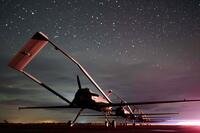A bi-partisan group of lawmakers is calling upon newly appointed National Security Advisor Susan Rice to conduct a formal strategy review of the administration’s Asia re-balance strategy, claiming the approach is in need of greater clarity.
The letter, co-signed by Rep. Randy Forbes – R-Va., Chairman of the House Armed Services Seapower and Projection Forces Subcommittee, Rep. Rob Wittman R-Va., Rep. Colleen Hanabusa, D-Hi and Del. Madeleine Bordallo D-Guam, asks the administration to produce a classified and unclassified interagency Asia-Pacific Strategy Review in order to more successfully delineate priorities and strategic goals in the region.
“Currently, agencies outside of the White House, including the Department of Defense, Department of State, and country teams at various Asia-Pacific Embassies lack the specific direction that will be required for the implementation of this strategy,” the letter states.
The Pacific Pivot calls for the the Navy to position as much as 60-percent of its fleet in the Pacific theater to potentially offset the growing influence of the Chinese military throughout the region. Other initiatives include a 6-month rotational deployment of up to 2,500 Marines to Australia.
Authors of the letter believe the Pacific Pivot needs additional detail and clarification.
“Asia promises to be a pivotal theater for U.S. national security interests in the 21st century and requires a robust U.S. military force posture in the decades ahead. Any interagency strategy review of U.S. Asia policy should address what type of military resources are required to protect U.S. interests and uphold our commitments to allies and partners in the region. I would hope that such a review, while charged with looking holistically at U.S. strategy in the region, would pay close attention to the resources needed to sustain a robust U.S. presence in Asia,” Congressman Forbes said in a written statement to Military.com.
Although the letter talks primarily about the need for an integrated, specific and well articulated strategic review of the Asia-Pacific strategy, the conversation is taking place within the context of a fast-changing threat equation in the Pacific region.
For instance, a recent report called China’s ballistic missile development program the “most active and diverse” in the world.
“China has the most active and diverse ballistic missile development program in the world. It is developing and testing offensive missiles, forming additional missile units, qualitatively upgrading missile systems, and developing methods to counter ballistic missile defenses. The Chinese ballistic missile force is expanding in both size and types of missiles,” according to the report done by the National Air and Space Intelligence Center.
The report also specifies that the Chinese military continues to develop and deploy large numbers of conventionally armed short and medium range ballistic missiles while developing a new submarine launched ballistic missile, the JL-2.
The intelligence report mentioned Anti-Access/Area-Denial concerns and also explains that the Chinese military uses nuclear armed ballistic missiles for regional nuclear deterrence. In addition, the NASIC report says China is acquiring new conventionally armed medium range ballistic missiles to conduct precision strikes, called CSS-5 MRBMs.
“These systems are likely intended to hold at risk or strike logistics nodes, regional military bases including airfields and ports and naval assets,” the report states.
At the same time, there has been overt tension and provocation from the North Korean regime.
North Korea’s recent unveiling of a new road-mobile Hwasong-13 ICMB and continued development of its Taepo Dong-2 missile were also cited specifically in the NASIC intelligence report.
“North Korea has an ambitious ballistic missile development program and has exported missiles and missile technology to other countries, including Iran and Pakistan. North Korea has also admitted its possession of nuclear weapons. An intermediate-range ballistic missile and a new solid propellant short-range ballistic missile are also being developed,” the report says.








